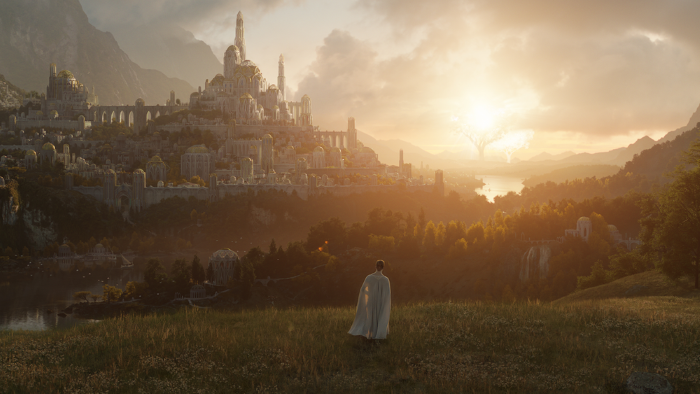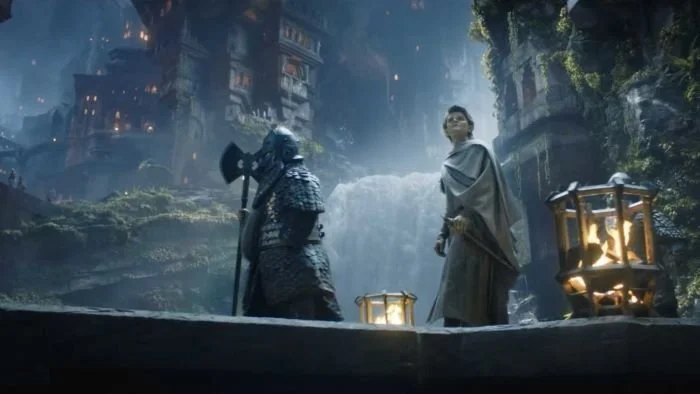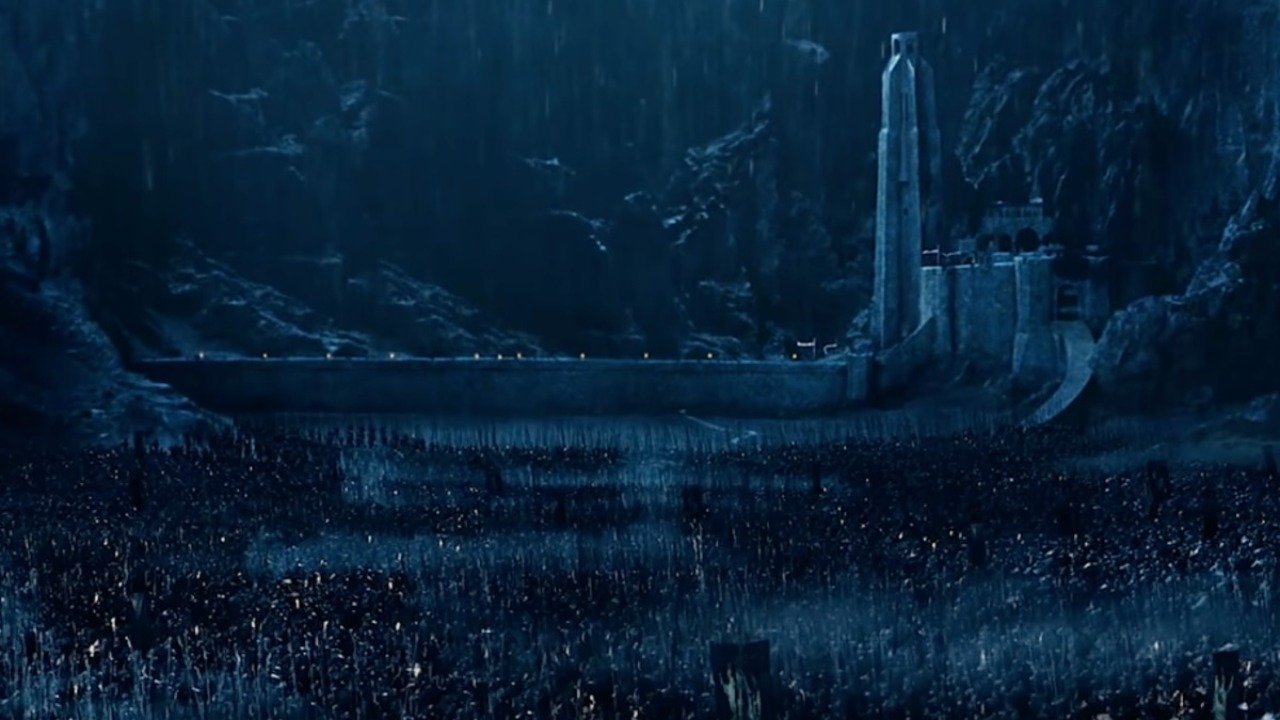This Is How They Crafted The Sets Of 'The Rings Of Power'
Image Source: About Amazon
Of course, one of the most iconic things about The Lord of the Rings films is their sets. Most of their sets were actually built on location and not filmed in a studio. This is part of the reason why fans love the films so dearly. Amazon’s The Rings of Power series has a lot to live up to. But, from the preliminary photos we have gotten so far, it seems like they have captured the essence of Middle-earth.
The Second Age of Middle-earth is the Golden Age. The Dwarves are still living in their hallowed halls at Khazad-dûm. The Elves mostly live in Lindon, one of the largest Elven cities. And then, there is Númenor, the island city of Men (descended from Elven bloodline) that boasts great cities, boats, and power. Ramsey Avery (known for his work on 10 Cloverfield Lane and Guardians of the Galaxy 2) is the production designer tasked with bringing the Middle-earth of the Second Age to life. And it was no small feat.
RELATED:
Avery talked to Entertainment Weekly about how crafting this Middle-earth was all about the balance between familiar and fresh:
“It's all about how this world is vibrant and rich and golden as opposed to what we see in the movies, which is the Third Age, when everything is on its decline, and it's fading.”
Image Source: USA Today
One of the challenges of crafting sets for this show is the number of locations involved. The series follows at least thirteen main characters from various backgrounds and living all over Middle-earth, and Avery had to come up with distinctive styles for each of them. For Lindon, the city of Elves, he chooses the Gothic style with tall, tree-like, columns and details. For Khazad-dûm, Avery does not want to show it in too harsh of a light. The Dwarves have not gotten greedy yet and woken the Balrog, but it still had to be grand.
“We thought, 'Well, let's go back to the true nature of the Dwarves and how they are of stone and of flame,.’ Their architecture, and even their clothing, is much more sensible. There's a sensitivity toward the stone, rather than forcing their will on the stone.”
Avery looks at the Harfootsfrom a different approach. The Harfoots are the precursors to the Hobbits but are very much not Hobbits yet. They are nomadic and travel around Middle-earth, not calling any place home yet. However, Avery still wanted to give them a little feel of the Hobbits that we know and love, a way to portray their unique styles while showing that they could, in the future, become the Hobbits. One way he does this was how the wagon wheels on the Harfoots’ carts resemble the iconic round Hobbit doors.
Image Source: TheOneRing.net
And then, Avery had to tackle the look of Númenor. Númenor has never been portrayed on screen, so everything is new for Avery and his team. Avery got a lot of inspiration from civilizations in the past, most notably in Grecian and Venetian designs with large marble structures around the city.
“It's this powerful country that has this great strength in sailing and great value in the water, so that's why blue is everywhere. We've got a zillion different shades of blue.”
Despite many films and shows using the green screen and CGI for half the sets, Avery wants to move away from that. He wants to build as many full real-life sets as possible. He wants to make Middle-earth real despite it being fantastical:
“We wanted it to feel real and honest and as present as we possibly could. We wanted to make sure that the actors had a world that felt inhabitable by them.”
J. D. Payne, one of the series’ showrunners added:
“It was like going to Middle-earth every day for work.”
Image Source: Fansided
Avery and his team’s work on the design of this series are sure to wow fans. The series’ attention to detail and love for Tolkien’s world is demonstrated by both the cast and crew.
The Rings of Power will premiere on Amazon Prime Video on September 2.
READ NEXT:
Source(s): Entertainment Weekly






